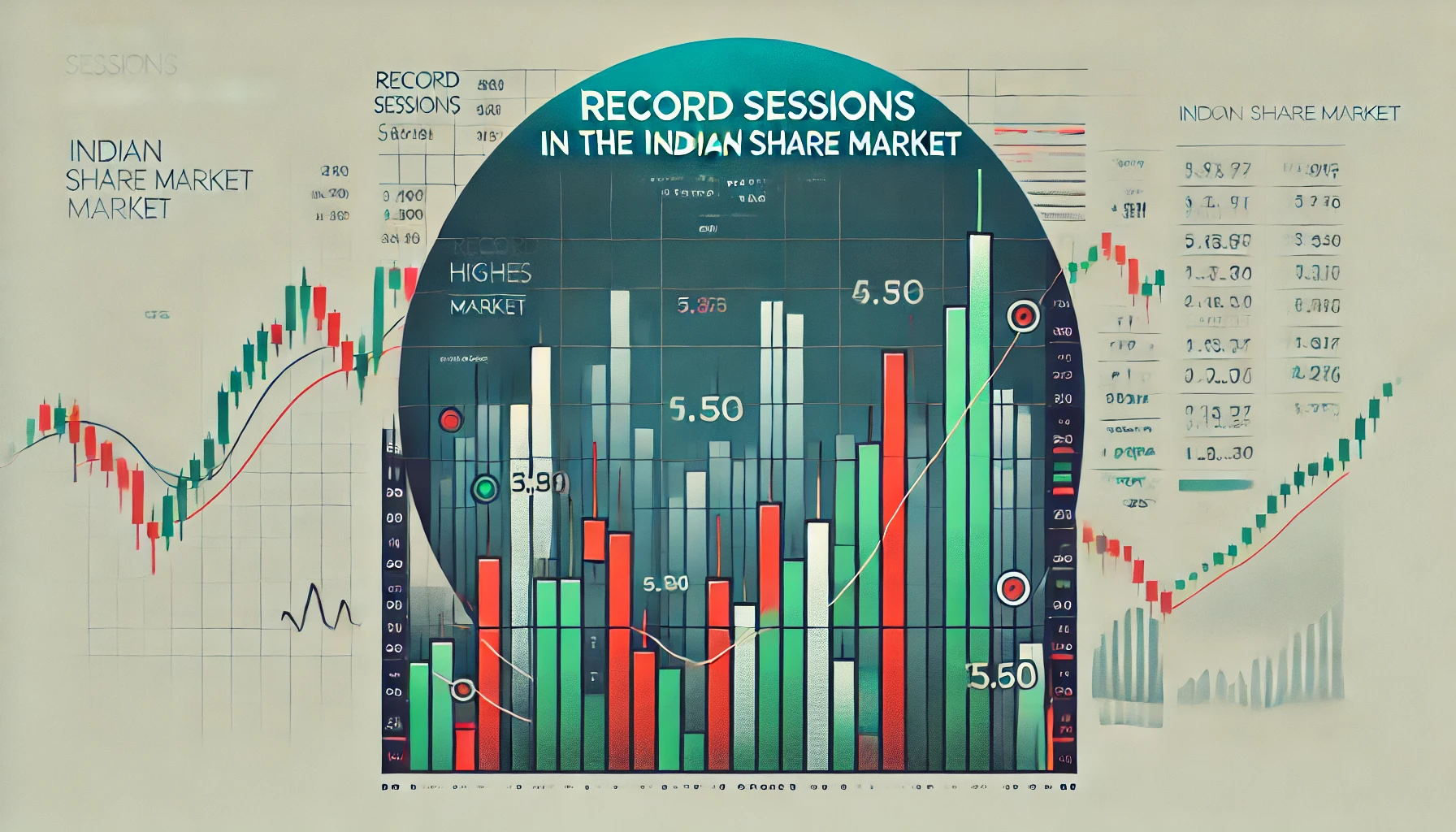In the dynamic and often volatile Indian share market, traders and investors continuously seek tools that offer flexibility and adaptability. One such technical indicator is the Adaptive Moving Average (AMA). Unlike traditional moving averages, which rely on fixed timeframes, the Adaptive Moving Average adjusts its sensitivity to market conditions, making it an ideal tool for both trending and sideways markets.
The Adaptive Moving Average, developed by Perry Kaufman in 1995, helps traders balance the trade-off between the speed of short-term moving averages and the stability of long-term ones. In this blog, we will dive deep into how the AMA works, its advantages, its limitations, and its historical performance in the Indian stock market.
What is the Adaptive Moving Average?
The Adaptive Moving Average is a type of moving average that adjusts its sensitivity based on market volatility. It is a tool designed to help traders and investors identify trends and reduce the noise in price data. The key strength of the AMA is that it reacts faster to price changes during trending markets and slows down in less volatile, sideways markets.
Formula and Calculation
The formula for the Adaptive Moving Average involves several components:
- Efficiency Ratio (ER): This measures the strength of a trend over a given period.
- ER=(∣Closet−Closet−n∣)/(∑i=1n∣Closei−Closei−1∣)
- Close: The closing price.
- n: The length of the period.
- Smoothing Constant (SC): This is adjusted based on the Efficiency Ratio.
- SC=(ER×(Fastest SC−Slowest SC)+Slowest SC)2
- Adaptive Moving Average (AMA):
- AMAt=AMAt−1+SC×(Closet−AMAt−1)
The Adaptive Moving Average thus uses the Efficiency Ratio to adjust the smoothing constant, making it more responsive in strong trends and less responsive in choppy, sideways markets.
Historical Performance in the Indian Market
The Adaptive Moving Average has been a valuable tool for traders in the Indian share market, especially during periods of high volatility. Its ability to adapt to changing market conditions makes it particularly useful for identifying trends in benchmark indices such as the Nifty 50 and Sensex.
Table 1: Performance of AMA on Nifty 50 (2015-2023)
| Year | Nifty 50 Close | AMA Signal | Market Condition | Resulting Move (%) |
|---|---|---|---|---|
| 2015 | 7,950 | Buy | Bullish | +8.3% |
| 2016 | 8,250 | Hold | Sideways | +3.1% |
| 2018 | 10,500 | Buy | Bullish | +9.2% |
| 2020 | 8,500 | Sell | Bearish | -10.5% |
| 2021 | 14,000 | Buy | Bullish | +15.4% |
| 2023 | 18,500 | Hold | Bullish | +7.8% |
The table illustrates the consistency of the Adaptive Moving Average in signaling profitable trades, particularly during bullish phases in the Nifty 50.
How to Use the Adaptive Moving Average in the Indian Stock Market
The Adaptive Moving Average is a versatile tool that can be used by traders to identify trends, entry and exit points, and market conditions. Here’s how to effectively apply it:
Step-by-Step Process for Using the AMA:
- Set the Period: Choose a time period suitable for your trading strategy. Short-term traders might prefer a 10-day AMA, while long-term traders may use a 50-day AMA.
- Analyze the Trend: Use the AMA to determine the trend. When prices are above the AMA and the AMA is sloping upwards, it indicates a bullish trend. Conversely, if prices are below the AMA and the AMA is sloping downwards, the market is likely bearish.
- Use Other Indicators: The AMA works best when used alongside other indicators such as the Relative Strength Index (RSI) or the Moving Average Convergence Divergence (MACD) to confirm signals.
- Optimize for Different Market Conditions: Since the AMA adapts to volatility, it can be more effective in trending markets than traditional moving averages. In range-bound markets, traders should use the AMA with caution and may want to combine it with support and resistance levels.
Example: Applying the AMA on Nifty 50
Let’s examine how the AMA performed during the market crash of 2020. In early March 2020, the AMA signaled a bearish trend as the Nifty 50 plunged from 11,000 to 7,500. The AMA helped traders exit the market before suffering major losses. In early 2021, as the market rebounded, the AMA turned bullish, allowing traders to enter again and ride the market’s upward momentum.
Table 2: AMA Signals During the COVID-19 Crash (2020-2021)
| Date | Nifty 50 Close | AMA Value | Signal Generated | Market Move (%) |
|---|---|---|---|---|
| March 2020 | 7,500 | 8,200 | Sell | -12.0% |
| June 2020 | 9,500 | 9,000 | Buy | +20.5% |
| January 2021 | 14,000 | 13,000 | Hold | +18.0% |
This table highlights the efficiency of the AMA in identifying profitable buy and sell opportunities during volatile market conditions.
Advantages of the Adaptive Moving Average
- Dynamic Response to Market Conditions: The AMA adjusts its sensitivity based on market volatility, making it more responsive in trending markets and less prone to false signals in sideways markets.
- Reduces Noise: The AMA filters out much of the “noise” in choppy markets, allowing traders to focus on meaningful price movements.
- Versatility: The AMA can be used across various timeframes, making it suitable for both short-term traders and long-term investors.
- Enhanced Trend Detection: The Adaptive Moving Average reacts faster to new trends compared to traditional moving averages, enabling traders to capitalize on emerging market conditions.
Limitations of the Adaptive Moving Average
While the Adaptive Moving Average offers several advantages, it also has limitations:
- Lagging Indicator: Like all moving averages, the AMA is a lagging indicator and may not be able to predict future price movements. It is best used to confirm existing trends.
- Complex Calculation: The formula for the AMA involves multiple steps, making it more complex to calculate compared to simple or exponential moving averages.
- Ineffective in Range-Bound Markets: The AMA can generate false signals in range-bound markets where prices are moving sideways with no clear trend.
Comparison with Other Moving Averages
To understand the strengths of the Adaptive Moving Average, it’s essential to compare it with other common moving averages, such as the Simple Moving Average (SMA) and the Exponential Moving Average (EMA).
Table 3: Comparison of AMA, SMA, and EMA
| Indicator | Best For | Strengths | Weaknesses |
|---|---|---|---|
| Adaptive Moving Average | Volatile markets | Adjusts to market conditions, reduces noise | Complex calculation, lagging indicator |
| Simple Moving Average | Stable trends | Simple to use, clear signals | Lags in fast-moving markets |
| Exponential Moving Average | Short-term trends | Reacts faster to price changes | More prone to false signals in choppy markets |
The AMA stands out for its ability to adjust dynamically to market volatility, making it a better choice in fast-moving markets compared to the SMA or EMA.
Real-World Application of AMA in the Indian Market
Let’s look at a real-world example from the Indian share market. In 2021, during a significant market rally following the economic recovery from the COVID-19 pandemic, the AMA was able to signal buy opportunities in several large-cap stocks. Traders who followed the AMA signals on the Nifty 50 index would have captured significant gains as the index surged from 14,000 to 18,000.
Table 4: AMA Performance in Indian Stocks (2021)
| Stock | Entry Point | AMA Signal | Resulting Gain (%) |
|---|---|---|---|
| Reliance | 1,800 | Buy | +22.5% |
| HDFC Bank | 1,300 | Buy | +15.8% |
| Infosys | 1,000 | Buy | +18.0% |
The table demonstrates the effectiveness of the Adaptive Moving Average in signaling entry points during a strong bullish trend in the Indian share market.
Conclusion
The Adaptive Moving Average (AMA) is a powerful tool for traders and investors in the Indian share market, especially during periods of high volatility. Its ability to adjust its sensitivity to market conditions makes it superior to traditional moving averages, particularly in trending markets. However, like any technical indicator, the AMA is best used in conjunction with other tools and should not be relied upon in isolation.
By understanding how to apply the AMA effectively, traders can enhance their decision-making process, capitalize on market trends, and reduce the impact of market noise. Whether you’re a short-term trader or a long-term investor, mastering the AMA can significantly improve your trading strategy in the Indian share market.

What is the TRIN stock market indicator?
The TRIN (Trading Index), also referred to as the Arms Index, is a technical analysis …

Record Sessions
The Indian share market is a dynamic and volatile space where major highs and lows …

3 Line Strike
Candlestick patterns are a vital tool for traders in the stock market, offering insights into …

3 White Soldiers and 3 Black Crows
Candlestick patterns are a key element of technical analysis in stock trading, offering clear signals …

Gapping Doji
Candlestick patterns are a critical part of technical analysis in the stock market, providing traders …

3 Windows
Candlestick patterns are a vital part of technical analysis, offering traders and investors insights into …

2 Gapping Candles
In the fast-paced world of the Indian stock market, technical analysis plays a crucial role …

3 Inside Down and Up
Candlestick patterns are powerful tools in the world of technical analysis, offering traders insight into …

Bullish and Bearish Belt Hold
Technical analysis is an essential part of trading in the Indian share market. Candlestick patterns, …

Piercing and Dark Cloud Cover
In the ever-evolving Indian stock market, candlestick patterns are crucial for traders aiming to predict …

Double Doji
Candlestick patterns have long been a favored tool for technical traders to forecast market movements. …

Rising and Falling Windows
In the world of technical analysis, candlestick patterns are vital tools for traders to anticipate …

Tweezer Top and Bottom
In the fast-paced world of the Indian share market, traders use technical analysis tools to …

Morning Star and Evening Star
In the Indian share market, technical analysis is a valuable tool for traders aiming to …

Hammer and Hanging Man
The Indian stock market offers a wealth of opportunities for traders who understand technical analysis. …

Shooting Star and Inverted Hammer
The Indian stock market, with its dynamic nature, presents various opportunities for traders and investors. …

Last Engulfing
The Indian share market is filled with patterns that can help traders make informed decisions. …

Harami
In the world of stock market analysis, candlestick patterns offer valuable insights into price movements. …

Engulfing
The Indian share market is known for its volatility, and traders often rely on technical …

Marubozu
Candlestick patterns are powerful tools used by traders in the Indian share market to analyze …

Spinning Top
The Indian share market, like any other, experiences constant fluctuations due to a multitude of …

Doji
The Indian share market is dynamic, with investors using various tools to gauge stock performance. …

Double Top
In the world of technical analysis, chart patterns are valuable tools that help traders spot …

Tweezer
In the Indian share market, where volatility and price fluctuations are part of daily trading, …

Harami
In the world of technical analysis, candlestick patterns are powerful tools that help traders make …

Heiken-Ashi
Navigating the Indian share market can be challenging due to the inherent volatility and market …

Ichimoku
In the world of technical analysis, few indicators offer the comprehensive insights that the Ichimoku …

Value Charts
In the ever-changing landscape of the Indian share market, traders and investors need tools that …

Money Flow Index
In the Indian share market, identifying trends, understanding momentum, and assessing volume are critical components …

Aroon
In the fast-paced world of the Indian share market, identifying market trends and spotting reversals …

Gator Indicator
In the Indian share market, success is largely dependent on identifying the right trends and …



















